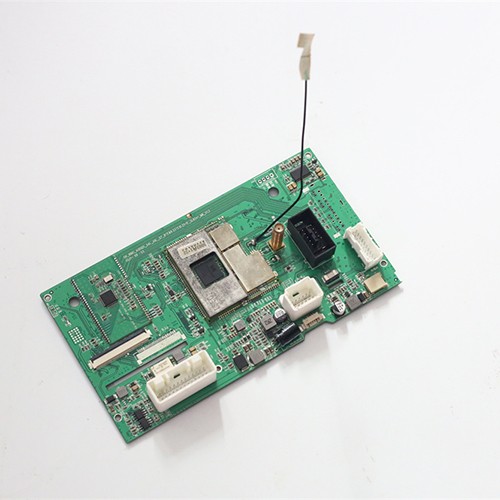RF radio frequency PCBA
RF PCBA is an electronic assembly that combines RF technology with printed circuit boards (PCBs) and assembles RF components on PCBs through processes such as surface mount technology (SMT).
RF PCBA is an electronic assembly formed by combining RF technology with printed circuit board (PCB), and assembling RF components on PCB through surface mount technology (SMT) and other processes.
Features of RF PCBA:
1. High frequency performance: RF PCBA needs to have good high frequency performance to ensure the stability and reliability of RF signals during transmission.
2. Low loss: PCBs and components made of low loss materials are used to reduce the attenuation of RF signals during transmission.
3. High integration: In order to meet the needs of miniaturization and high performance, RF PCBA usually has a high integration.
4. High reliability: RF signals are highly sensitive to the environment, so RF PCBA needs to have good anti-interference ability and reliability.
Material selection for RF PCBA:
1. High-frequency materials: The PCB substrate of RF PCBA usually adopts high-frequency materials, such as polyimide (PI), polytetrafluoroethylene (PTFE, also known as Teflon) and aluminum nitride ceramics. These materials have low dielectric constant and low loss factor at high frequencies, which is conducive to the transmission of RF signals.
2. Components: The components on RF PCBA include RF chips, filters, couplers, power dividers, antennas, etc. These components need to have good high-frequency performance and stability.
RF PCBA is an electronic assembly formed by combining RF technology with printed circuit board (PCB), and assembling RF components on PCB through surface mount technology (SMT) and other processes.
Features of RF PCBA:
1. High frequency performance: RF PCBA needs to have good high frequency performance to ensure the stability and reliability of RF signals during transmission.
2. Low loss: PCBs and components made of low loss materials are used to reduce the attenuation of RF signals during transmission.
3. High integration: In order to meet the needs of miniaturization and high performance, RF PCBA usually has a high integration.
4. High reliability: RF signals are highly sensitive to the environment, so RF PCBA needs to have good anti-interference ability and reliability.
Material selection for RF PCBA:
1. High-frequency materials: The PCB substrate of RF PCBA usually adopts high-frequency materials, such as polyimide (PI), polytetrafluoroethylene (PTFE, also known as Teflon) and aluminum nitride ceramics. These materials have low dielectric constant and low loss factor at high frequencies, which is conducive to the transmission of RF signals.
2. Components: The components on RF PCBA include RF chips, filters, couplers, power dividers, antennas, etc. These components need to have good high-frequency performance and stability.
- Previous:没有了
- Next:Automobile smart cabin motherboard PCBA





